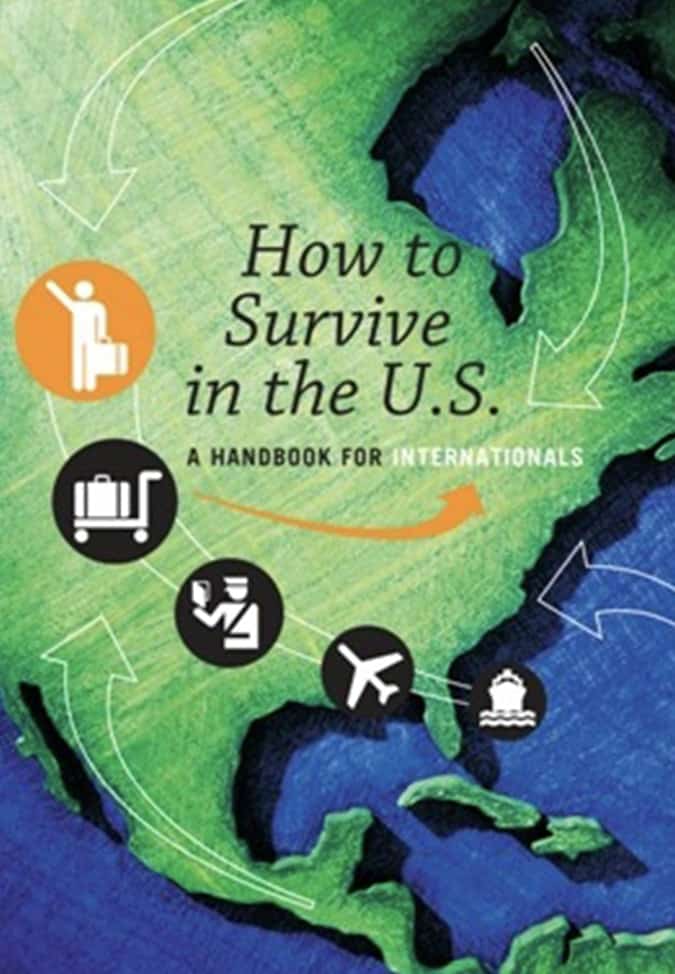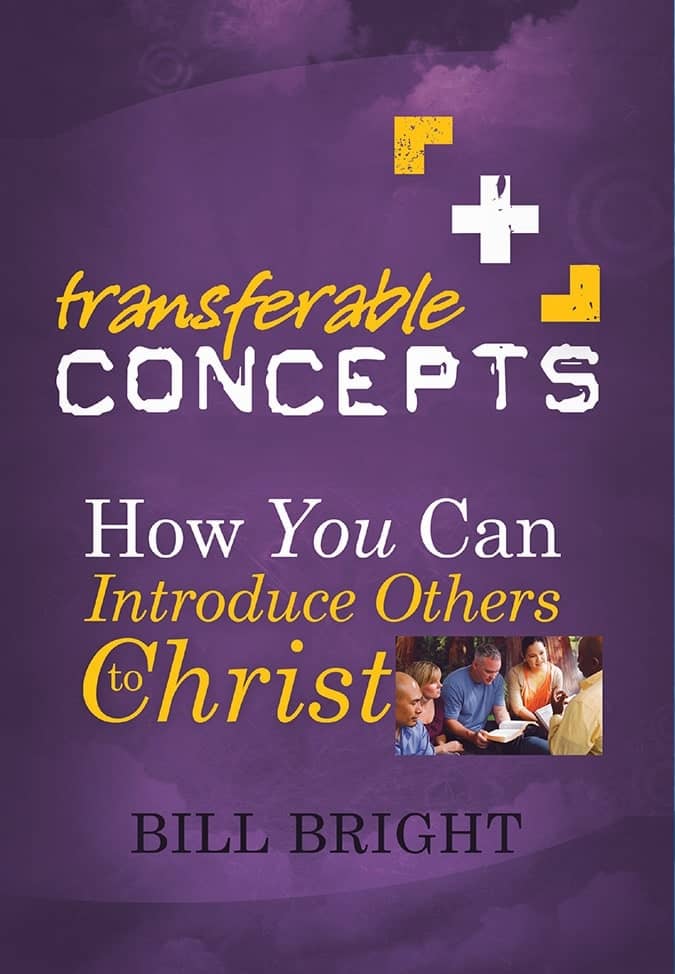Reaching a Campus Through Cell Groups
A cell group is a small group that is going somewhere. It is a proven way to help college students connect with God, with each other, and with lost students.
Today’s students need a place to connect. Fifty percent of today’s students come from broken homes. The college years are a fresh chance to make friends and build bonds of trust with other people. Because students can be skeptical of authority, they learn best in a social (relational) context where ideas can be freely discussed. Christian students need a safe place to process biblical truth and develop personal convictions.
A cell group is an on-campus expression of biblical community. Life among the family of believers in the New Testament church is pictured in Acts 2:42-47:
“They devoted themselves to the apostles’ teaching and to the fellowship, to the breaking of bread and to prayer. Everyone was filled with awe, and many wonders and miraculous signs were done by the apostles. All the believers were together and had everything in common. Selling their possessions and goods, they gave to anyone as he had need. Every day they continued to meet together in the temple courts. They broke bread in their homes and ate together with glad and sincere hearts, praising God and enjoying the favor of all the people. And the Lord added to their number daily those who were being saved.”
This biblical community exhibited these four values:
- They had a passion for God expressed in prayer and praise.
- They had a commitment to one another expressed in caring fellowship.
- They had a desire to grow expressed in biblical teaching.
- They had a heart for the lost expressed in leading others to Christ.
CHANGED LIVES IN BOSTONKohichi, a Ph.D. student at MIT in Boston, was excited about starting a cell group with his circle of friends. In his laser lab, he had been working with a Muslim woman, Farzana, and for one year had been sharing Christ with her. After seeing Kohichi’s life and other Christians, Farzana received Christ. She began attending Kohichi’s cell group and has been growing in her relationship with God ever since. She is deeply touched by the way the cell group loves and accepts her. Stacey’s cell group included students at various spiritual maturity levels. One of her members, Jennifer, had been slowly drifting from God. Because of the structure of the cell group Jennifer still felt free to come and participate in the group meetings. The cell group was her only involvement with Campus Crusade and God used it to restore her walk with God. The following year Jennifer and Stacey were both student leaders on their campus.
WHAT IS A CELL GROUP?
- A cell group consists of 5-15 people that exists for the purpose of turning lost students into Christcentered laborers.
- A cell group has LIFE, and because it has life, it grows. As a cell group grows, it multiplies by giving birth to new cell groups, which give birth to more groups.
- A cell group is the means of taking the gospel to every student on campus. Members of cell groups creatively and prayerfully reach out to lost students. A cell group is not...
- Just a Bible study, though Bible study is a vital part to a Christian’s growth.
- Just a fellowship, though relationships can make or break a group.
- An end in itself, but a means of taking the gospel to the campus.
THE BENEFITS OF A CELL GROUP
- Christian students are strengthened in their relationship with God through prayer and Bible study.
- Friendships are developed through group discussions and social activities.
- The group provides a team context for evangelism through prayer for lost friends and training in ministry. Members of the group are encouraged to build commonground relationships with the lost on campus. Periodic parties and Bible studies support the evangelism process.
- New believers (as well as other Christian friends) are easily incorporated into the group. A chair is left empty at each meeting to symbolize openness to new people. In most cases the new Christian has a comfort level with the group from having been at parties and other events with the Christian students.
- Spiritual growth occurs in the context of community. Modeling takes place because of the mix of mature Christians and young Christians. One-onone discipleship can be arranged as needed outside the group. Personal follow-up and mentoring can be handled by various people, not just the leader.
- The group can be co-ed, or can be divided into men’s and women’s groups.
- The cell group can be a bridge to the local church. New believers will naturally want to attend church with their friends. In fact, church volunteers and Christian faculty can lead cell groups on campus or in homes.
- Tools and resources are available to help the cell group leader prepare for the group. Campus Crusade’s Cru.Comm studies are easy to use, student- friendly, relevant, and suitable for various levels of spiritual maturity.
- A cell group can have an influence on the entire campus. For example, a student interested in mass communications can utilize a mix of campus media to expose the student body to a Christian worldview on a regular basis. Resources for evangelistic outreaches are available from Campus Crusade.
- Leadership development and student ownership are enhanced through cell groups. Each group begins with a leader (facilitator) and apprentice (assistant). Since the optimum size of the group is 4-10, it will one day need to form a new group. While the new group can happen in various ways, each begins with a leader and another apprentice.
- An initial cell group can be the beachhead for an eventual campus-wide ministry. As new groups are born, the group leaders meet weekly for a “VHS” (vision/huddle/ skills) meeting. In fact, the “VHS” meeting can provide a touch point for cell groups on more than one campus. This can be especially helpful for expansion to new campuses in metro areas.
- Finally, a cell group can have an impact on the world. The group can pray for and participate in international partnerships through the Worldwide Student Network (WSN–see additional resources). Each year students from all across the United States participate in overseas missions opportunities. A student in the cell group can be designated to spearhead the effort and facilitate world vision.
STEPS TO TAKE
Select both a leader and an apprentice. The qualifications for these positions are a track record of spiritual growth, ability to build relationships, and a commitment to the mission of the group.
Recruiting students to be members of the group. Look for students who share the values of Acts 2:42- 47. Explain that this is more than a Bible study – it is a group that is going somewhere. But don’t overload students with too many qualifications. Remember, spiritual growth will happen in the context of the group.
Promote group interaction. Keep it informal. Include discussion-oriented Bible study, and share prayer requests. Success is not measured by how much the leader says, but by how much people talk about meaningful things.
Encourage outreach. Encourage each person to pray for three friends who do not yet know Christ.
Welcome new people into the group. These can be new believers or other friends from around campus. An empty chair is always a visible reminder that guests are welcome.
When the time comes, birth a new cell group. You know it’s time to birth a new group when you have 10-15 people. As with all births, it will be both painful and exciting. Either the apprentice or the leader can start the new group. Reassure students that there are many ways to maintain relationships between the groups.
Once you have several groups, begin a VHS meeting. Cell group leaders will need shepherding and input on a regular basis. They‘ll also have plenty of problems to solve. The VHS meeting is a chance for you to develop these leaders.
CELL GROUPS IN THE BIG APPLECampus Crusade staff member Chris Whitford works in New York City and has a vision for reaching college students on the many campuses in Manhattan. She has a big heart for the people and she enjoys the ethnic diversity and cultural life in New York, but some difficult years ministering at Columbia University convinced Chris she needed a new approach. So Chris joined forces with Redeemer Presbyterian Church which shares a similar vision for reaching Manhattan. She then organized the student ministry after the cell model to foster community, develop leadership and encourage growth of the ministry to additional campuses. Despite formidable obstacles, Chris has been very encouraged by what God has done so far:Alumni volunteers have found cell groups a rewarding way to contribute to the ministry with their limited time. Ryan is involved at Columbia. Leah, a graduate of the university of Virginia, is adviser to a group at the Fashion Institute of Technology. Kevin had experience in Campus Crusade at Queens and Intervarsity at Oberlin, and now is a volunteer with the ministry. Jenny was involved with a cell group at NYU and had such a positive experience that she is beginning one at the School of Visual Arts. After attending a Campus Crusade summer project at Wildwood, N.J., Paul began a cell group with students from Manhattan School of Music and Mannes School of Music. No official religious activity is permitted on these campuses. The off-campus location of the cell group has helped Christian students to connect with one another. A cell group at Columbia has been a good place for two seekers to consider the Christian faith. The cell model has been a helpful addition to the overall Metro Strategy recently begun in New York City. A Christmas party drew 200 students, including students from the above campuses, Redeemer Presbyterian Church, and several flourishing Student LINC campuses. (See additional resources.) Chris gives direction to the student cell group leaders at the “VHS” meeting. According to Chris, the cell model is an easier model to manage ministry growth while maintaining oversight. It has been a boost to the smaller ministries in the city, and has provided her with more venues for influence.KEY ROLES IN A CELL GROUP
- The leader organizes the group and gives it direction. The leader needs to cast vision and coach the group. Sometimes the leader facilitates the Bible study, but this can be done by others also.
- The apprentice (assistant) is being mentored for future leadership. This person will have the chance to lead various segments of the cell group and do some mentoring outside the group. ere are the suggested icebreakers from that book.
OTHER POTENTIAL ROLES
3. The hospitality person organizes food and helps ensure a fun, informal environment.
4. The media/communications person arranges for publicity on campus and facilitates broad exposure strategies using campus media.
5. The prayer coordinator leads praise and intercession in the group and develops a prayer plan. This person may put people in prayer partnerships or implement other creative ways to encourage prayer and dependence on Christ.
6. The evangelism coordinator encourages personal evangelism by doing it and bringing others along. The coordinator also provides periodic training (how to share Christ, giving a testimony, etc) and helps people organize four-week evangelistic discussion groups with friends. Parties now and then where people can bring their non-Christian friends are also an idea for the coordinator.
7. The missions person encourages prayer and involvement in an overseas partnership. It gets exciting when the group (or all the cell groups on campus) decide to get involved.
OWNING THE MINISTRY IN ATLANTAHowie Espenshied has adapted the cell model at Georgia Tech, and says it has revolutionized the mentality of the student leadership. Danny McKinney is developing a strategy and building a team on the stength of the ministry at Georgia Tech to reach the 100,000 students in Atlanta.This past fall they saw an increase in their small group involvement from 75 students to 150. The “VHS” meeting is attended by 25 students (facilitators and assistants) representing 12 connection groups on two campuses. Danny believes the increased involvement results from the openended nature of the groups.Student ownership of evangelism has increased. The greek ministry on campus has two connection groups, one with 12 students and another with 17. They teamed up to host an outreach to greeks and invited a Christian businessman to speak on success. Seventy attended the outreach.SAMPLE FORMAT FOR A CELL GROUP MEETING
The group can meet in a dorm room, dorm lounge, a comfortable room in the student center, or in someone’s apartment or home. The more informal the atmosphere the better.
- Mixer/ ice-breaker: Relax, laugh, have some refreshments. One bi-weekly cell group met every other Sunday after church in a home and called the meeting “ Sunday Brunch.” Scrambled eggs and English muffins were a big hit.
- Welcome/ vision: Guests are introduced, the leader sets a tone for the meeting. This can be a good time to introduce the theme or restate the vision for the cell group.
- Bible study: The Cru.Comm Bible studies on a variety of topics can be obtained through Campus Crusade for Christ. You’ll never run out of good things to talk about.
- Prayer: Invite people to share prayer requests related to the Bible study or other personal issues in their lives. This is also a good time to pray for the campus and for lost friends.
- Announcements: This is a good time to hear from the hospitality coordinator or evangelism coordinator about upcoming events. Something like: “We’re going to the football game together this Saturday and meeting at Mary’s afterward for a fifth-quarter barbecue. Feel free to bring friends.”
- Tool time: Occasionally you might want to equip the group with a particular ministry skill tied to real life. For example, people might enjoy hearing ideas on how to organize a four- week discussion group with some lost friends in the dorm.
This is only a sample, so feel free to mix and match. Other things could be added, such as having people share (“I had an answer to prayer this week.”) or asking a group member to share their testimony. (Ask in advance – don’t put someone on the spot.) Be sure to finish on time, and remember, the more relational SMALL GROUP ICEBREAKERS the better.





















